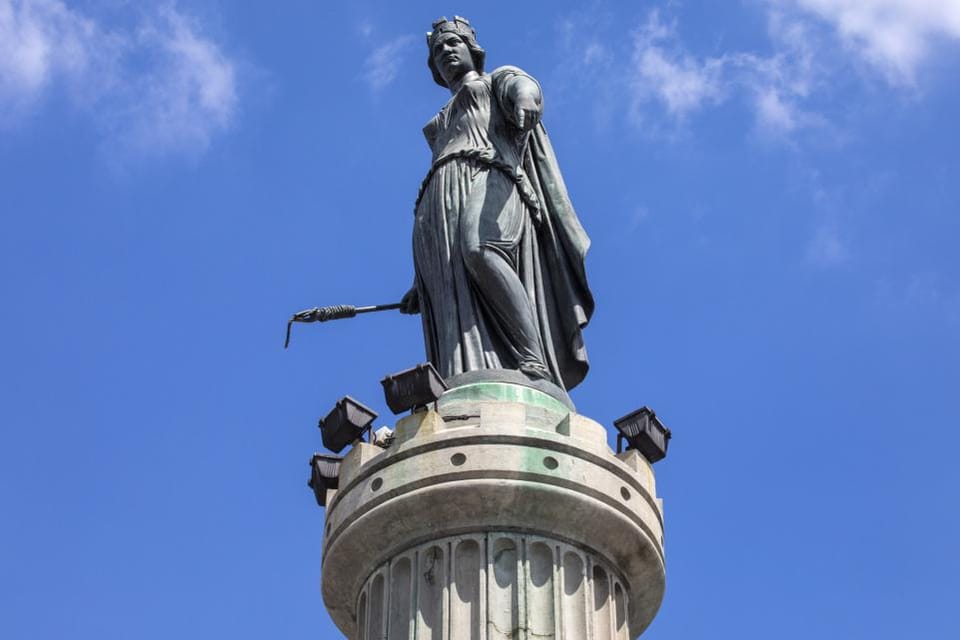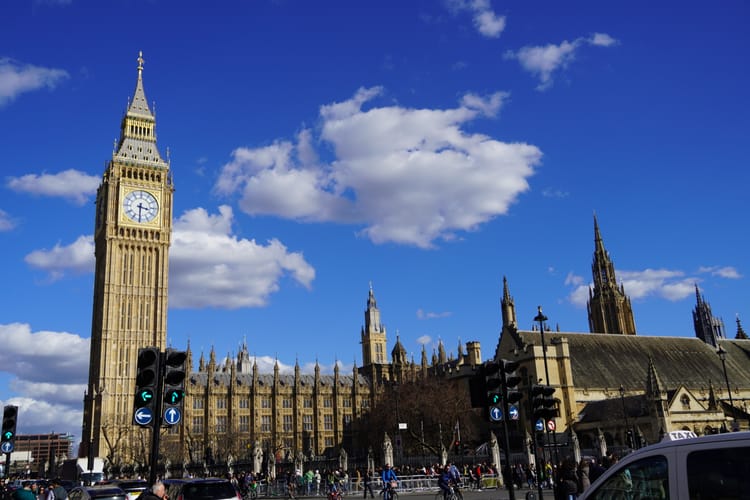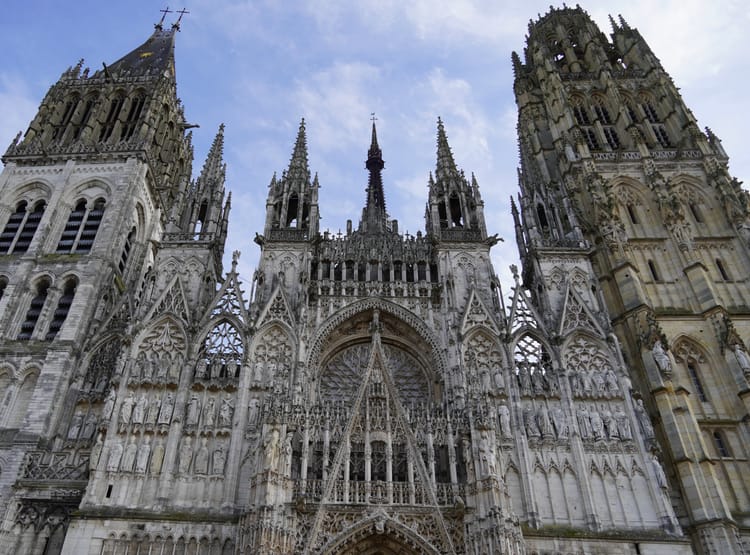Lille

We spent 48 hours in the Lille, the capital of the Hauts-de-France region! Lille lies about 135 miles (only an hour on the train) from Paris, and just under 10 miles from the Belgian border.
We started off our trip with a walking tour of Vieux Lille. We always enjoy spending some time in a new city getting to learn its history, and this tour did not disappoint! Here's some facts we learned while on our tour, and while wandering around on our own.
Lille is said to be founded as early as the 7th century, but does not appear in texts until the late 11th century, so the initial founding date is a bit contentious. It has at times been under Flemish, Burgundian, and Spanish rule, but came under French rule in 1667 when it was conquered in fifteen days by Louis XIV during his conquest of the "Low Countries" which constitute modern France. Despite being laid siege by Britain in the early 1700s, occupied by the Germans in both World Wars, and again laid siege by the Austrians in 1792, Lille has remained in French hands, and seemingly will stay that way for as long as France exists.
The first picture in the gallery below is from the Lillois war memorial "dedicated to the heroism and suffering of its children who died for peace" during the first and second world wars. Lille was sieged, captured, and subsequently occupied for much of both World Wars, and these memorials are a sobering reminder of just how much conflict and destruction this city has gone through during its history.
After the memorial, we headed into the city center for "La Grande Place" (aka "Place du Général de [Charles de] Gaulle" who was born in Lille). La Grand Place is, as the name suggests, a large pedestrian square at the heart of Vieux Lille. It is surrounded by restaurants, shops, and businesses housed in beautiful buildings designed in numerous different architectural styles which reflect the time periods in which they were built and restored. The Grand Place is also home to "La Voix du Nord" newspaper, and "Théâtre du Nord" performing arts theater.
Perhaps the most famous (or at least most eye-catching) building here is the Flemish architecturally styled monument, "La Vieille Bourse" (see the final two photos below). La Vieille Bourse was once home to Lille's Chamber of Commerce and Industry, but today is a lively mixed use space for events such as book markets, parties, dancing, and chess playing.
Again reminding us of its long history of conflict, in La Grand Place you'll find the "Colonne de la Déesse" monument of the Austrian siege of 1792. The monument is topped with a three meter tall statue simply known as "the Goddess," who stands watch over the square with her "boute" in hand, ready to light the wicks of cannons for its defense. You can also see remnants of that siege by searching for the numerous cannonballs stuck in the buildings around the square, such as those in the last photo below of La Vieille Bourse.







Palais des Beaux Arts
Next stop is for a bit of culture! The Palais des Beaux Arts museum was founded in the early 19th century by order of Napoleon 1st. Its works were initially housed in a former church and in Lille's town hall, before moving to their permanent home in the 19th century, after construction was finished on the Baroque revival style building where it remains today. Upon its completion, the Palais des Beaux Arts became one of France's first fine arts museums, and to this day remains one of its largest. The building's footprint takes up a colossal 22,000 square meters spanning across four floors of permanent and temporary exhibits, and houses over 70,000 (!) works from antiquity, the middle ages, the renaissance, all the way through the 18th and 19th centuries. Among too many others to recount, we saw paintings from notable artists such as Rubens, Edouard Manet, Picasso, Francisco Goya and Claude Monet, sculptures by Rodin and Donatello, and drawings from Raphaël and Matisse. Considering the population of metropolitan Lille is just below 250,000 people, I find it pretty remarkable that they were able to build and source such a tremendous quantity, quality, and diversity of art (although I know a lot of it came from donors outside of the city as well).
During a renovation project undertaken in the 1990s, architects were also able to expand the museum even further with the creation of a 700 m2 basement. In addition to various temporary exhibits, the basement dedicated an entire room to relief maps of fifteen different towns from around the North of France and Belgium. Each of these 18th century maps are around 40-50 m2 (our "large" Parisian apartment sits at ~55 m2), and thanks to an extensive and meticulous renovation project, artisans were able to restore a stunning amount of their original forms. The maps contain details such as hand made buildings, trees, roads, and rivers, and are also hand painted throughout.
There's plenty more to talk about in the Palais des Beaux Arts, I would recommend checking out their website if you want to see more. https://pba.lille.fr/en








Various pieces from around the museum including the entrance hallway and "soap bubble", a statue of Napoleon the 1st, Rodin's "Grande Ombre," "The Birth of Venus", and one of the museum's fifteen relief maps
Notre-Dame-de-la-Treille Cathedral
This gothic style cathedral and basilica began its construction in the mid 19th century, but due to a consistent lack of funding, was not deemed "complete" until 1999. Similar to many other "Notre Dame" cathedrals, it was constructed to honor the Virgin Mary, and houses a 12th century statue which is said to have miraculous properties and protects the inhabitants of the city.
You'll immediately notice that the facade seems incomplete, and at odds with many other Gothic style cathedrals. Due to the aforementioned lack of funding, the facade was initially constructed of brick, but after many years of slow progress raising funds, the previous plans were put aside and a more feasible set of plans were decided upon. Architects decided to install a more contemporary "veil" facade of thin pink marble accompanied by a 6.5 meter rose glass window, both of which are suspended and reinforced by a skeleton of steel rods. This "unfinished" looking design is obviously quite polarizing, but as you can see in the photo below, the opacity of the facade afforded a stunning interior view within the cathedral that I have never experienced before which I loved.




"Beffroi de l'Hôtel de Ville de Lille" and "Musée de l'Hospice Comtesse"
Our last two sight seeing pit stops were at the "Beffroi de l'Hôtel de Ville de Lille" (Lille Belfry), and the "Musée de l'Hospice Comtesse" (Hospice Museum).
The Lille Belfry is a 104 meter high tower that was constructed in 1932 after the former town hall was destroyed in, you guessed it, war (specifically WWI). Ascending to the belfry's panoramic balcony requires visitors to either climb 400 steps, or take an elevator; we opted for the stairs because each floor had interesting little historical tidbits. We learned that the belfry was the broadcast site of the first television program of France, served as the first radio relay link with Paris, and was also a news broadcast center which broadcast the coronation of Queen Elisabeth in 1953. It is currently classified as a UNESCO world heritage site.



The Hospice Museum was a quick, but informative, tour through the former "Notre-Dame" hospital founded in in 1237 by the Countess Jeanne de Flandre. The hospital was in operation all the way until 1939, and included a chapel, hospital sick room, medicinal garden, interior courtyards, and a community house for the Nuns living onsite. Currently, the museum also contains a museum of local art and history for the city of Lille. On display during our visit were numerous intricately carved wooden statues and figures, tapestries and portraits of Lille and its wealthy merchants, and two enormous wooden globes, one depicting the night sky and the other of the earth. Unfortunately we weren't able to see the interior of the chapel because it was in the process of setting up a new temporary exhibit, but the limited view we got of its ceiling, which is covered in paintings of 66 coats of arms, was still quite remarkable.





Fooooood
No trip to a French city is complete without trying out as much food as possible, and we made sure to get our fill. At L'Ogre de Carrouselberg we tried "p'tit pouchins" (little chicks), choux pastries flavored with vanilla and orange blossom, and a decadent "Mont blonc aux Poires," which was a "vanilla flavored pear compote, chestnut cookie, pear coulis, and light chestnut cream." We also went to "Sylvana Briocherie Festive" to try a vanilla creme filled brioche bun coated in pistachios and powdered sugar (SO delicious), and stopped by the Meert chocolaterie (there's actually one right next to us in Paris too!) just to make sure we didn't take any chances on running a calorie deficit for the weekend. All of the patisseries were remarkably light despite their size, and we always have to force ourselves not to spend our weekend only trying out all the different options.
Since it is so close to Belgium (and has several colleges), Lille has a lively beer scene. Bars around the town are filled with beers from Belgian breweries, and we were happy to try them out. We visited "La Capsule" beer hall which has 30 beers on tap, and tried some really tasty cheese that had been soaked in Chimay beer. On our last day while we waited for our train, we also stopped at a restaurant called "Beerstro" and tasted some beers from the Flemish brewery "Anosteké," which won the world beer cup's best strong ale in 2022, and best pale ale in 2021, among many others awards. I really enjoyed the their pale ale, and need to try and find it here in Paris. Again, there were more beer options than we knew what to do with, but we'll just have to try them out on our next trip.






Lille was lovely, and an easy getaway from Paris. With round trip train tickets for two totaling under 100 euros, and accommodations for ~75 euros a night, I'm sure we'll be coming back once the temperatures pick up a bit (although we were told not to expect much more than the 50ish degrees we had). We can't wait to come back.
à bientôt!
-Parker




Member discussion